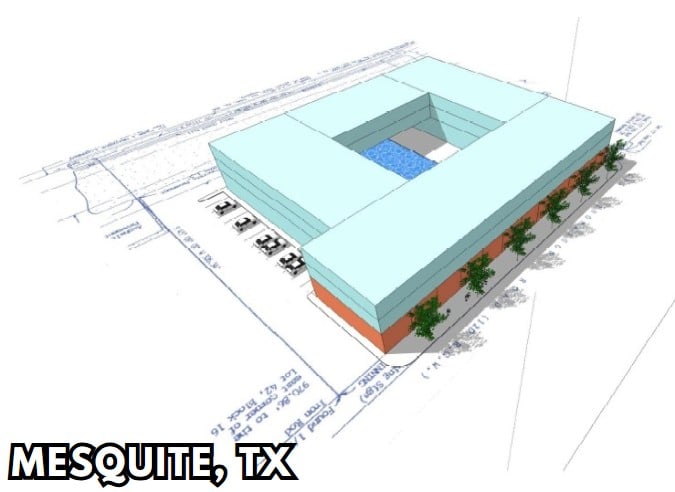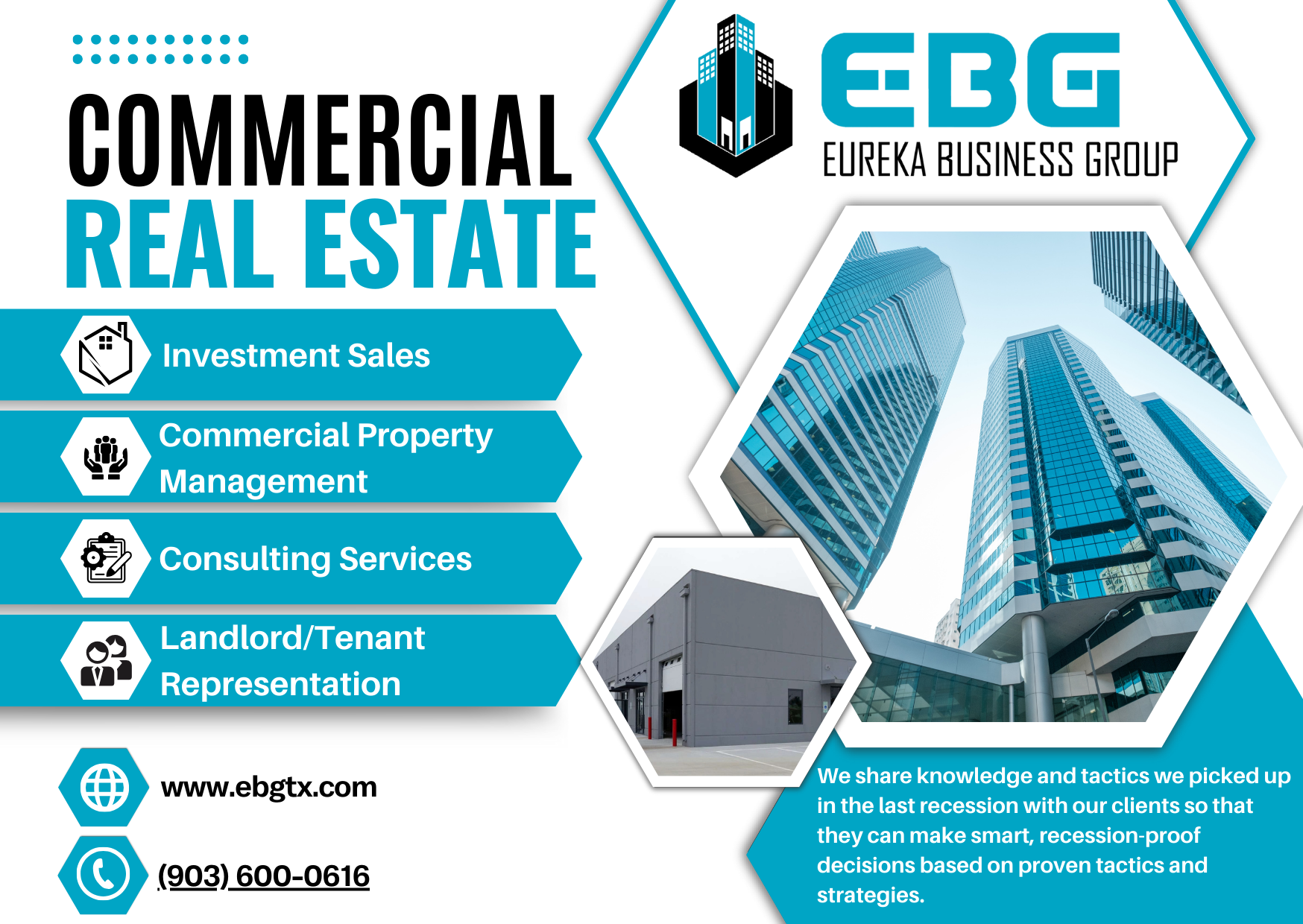Welcome to the Deep Dive. Today we’re headed to the Lone Star State to unpack some really fascinating business and real estate trends that are reshaping Texas. Our sources are hot off the presses from CoStar News, spanning November 1st to the 8th, 2024. We’re talking company expansions, bankruptcies, housing market shakeups, and even a peek into how those savvy investors are playing their cards.
Yeah, what’s really intriguing. is we’re not just seeing growth, we’re seeing like a realignment. Some sectors are struggling to find their footing, while others are experiencing this like boom, and it’s all happening against this backdrop of Texas dynamic economy. It’s like a real life game of Monopoly, right?
Some properties are hot commodities, others are headed straight for the auction block. But, before we get ahead of ourselves, Let’s zoom in on the retail sector. Yeah, the retail landscape is definitely going through a major transformation. On the one hand, you have those iconic brands like TGI Fridays, filing for bankruptcy, closing dozens of locations nationwide.
The container store is also feeling the pressure, announcing store closures and financial struggles. It’s almost like walking through a ghost town of familiar brands. But here’s the head scratcher. Despite these closures, the overall retail market in Texas remains incredibly tight. Vacancy rates are low, which means competition for space is fierce.
It’s the paradox, isn’t it? It’s not just about a lack of demand. It’s about a shift in what consumers want. Think about it. You’re probably less likely to wander through a mall aimlessly these days. You’re looking for an experience, for value. And traditional retailers are having to adapt. Some are doing it brilliantly, while others, unfortunately, are falling behind.
So while some retail spaces are gathering dust, others are being snatched up as quickly as they become available, it’s a real estate tug of war. But let’s move on to a sector that’s experiencing a completely different reality, industrial real estate. Here the story is one of explosive growth, especially in the Dallas Fort Worth area.
Yeah. DFW is leading the nation in these massive industrial construction projects. We’re talking facilities so large they could house multiple football fields. Wow. That’s a serious amount of square footage. What’s driving this demand for industrial space? Is it all about those late night online shopping sprees we’re all guilty of?
You hit the nail on the head. The rise of e commerce is a major factor. Companies like Amazon need these sprawling distribution centers to handle the ever increasing flow of goods. It’s all about speed and efficiency, the world of online retail. And these big bombers are the engines that keep things moving.
It’s like watching a well oiled machine. But on a gigantic scale. And speaking of Amazon, they’ve just announced a new 200 million fulfillment center in Cleburne, Texas. That’s a huge investment, and a sign that this industrial boom isn’t slowing down anytime soon. Absolutely, and investors are taking notice.
Commercial property sales and DFW are surging, and a big chunk of that growth is fueled by industrial deals. It’s a classic case of supply and demand. As the need for these mega warehouses increases, So does their value, creating a very attractive opportunity for investors. So it’s a win win for developers and investors.
But let’s venture into a sector that’s facing a bit more uncertainty. The office market. The office market is definitely navigating some choppy waters. Dallas Fort Worth in particular is grappling with high vacancy rates. Exceeding even the national average. That’s a lot of empty desks and echoing hallways.
What’s contributing to this office slump? Is it the lingering impact of the pandemic and that work from home life? Many of us embrace the rise of remote work is undoubtedly a factor. The pandemic forced many companies to adopt work from home models, and some have found that they actually prefer this setup.
It’s cheaper, it offers employees more flexibility, and it can be more productive in some cases. But it also raises questions about the future of those massive office towers we’re so used to seeing in our city skylines. What happens to those spaces if companies decide to ditch the traditional office altogether?
It’s a valid question. Some believe we’ll see a resurgence in demand for office space as things settle into a new normal. But others predict a more permanent shift towards hybrid or fully remote work models, leading to a surplus of office space. This raises intriguing possibilities. Could these buildings be repurposed for housing, mixed use developments, or something entirely different?
It’s a puzzle developers are grappling with right now. It’s like a giant game of Tetris, trying to figure out how to fit these massive pieces Yeah. into a changing landscape. But speaking of changing landscapes, let’s pivot to a topic that’s deeply intertwined with the real estate market. Affordable housing.
The affordable housing crisis is a complex issue with far reaching consequences. Rise in home prices and interest rates have made homeownership a distant dream for many. While simultaneously pushing up rental rates, it’s a perfect storm, creating real hardship for individuals, families, and communities across Texas.
It’s a daily struggle for so many, just trying to find a decent, safe, and affordable place to call home. But amidst this challenging landscape, there are some glimmers of hope. There are. For example, we’ve seen standard communities, a major player in the affordable housing sector, make a significant investment in Texas.
They recently acquired a portfolio worth a billion dollars that includes properties across the state. Demonstrating a commitment to addressing this critical need. That’s a hefty investment, and it sounds like it could make a real difference in people’s lives. But are there other forces at play that are making the affordable housing situation even tougher?
Unfortunately, yes. The expiration of certain government programs is further reducing the availability of affordable units. And with interest rates still on the rise, building new affordable housing is becoming increasingly expensive, adding yet another layer of complexity to this problem. So it’s a multifaceted challenge, requiring a combination of public and private sector solutions.
But let’s turn our attention to a different corner of the housing market, the multifamily sector. Texas seems to be leading the pack when it comes to building new apartments. Texas, and particularly cities like Dallas Fort Worth and Austin, are experiencing a multi family construction boom. Just picture cranes dotting the skyline, constantly building new apartment complexes.
This construction frenzy is a direct response. To the strong job growth and population influx the state is experiencing, people are moving to Texas in droves, and they need places to live. It’s like a game of musical chairs, but with a lot more chairs being added all the time. But even with all this new construction, is it enough to keep up with the demand?
That’s the big question. Despite the increase in supply, demand for rental properties, especially single family homes, remains robust. And this is driving rental rates upward in many areas. It’s a classic case of economics at play. High demand and limited supply often lead to higher prices. So for those looking to rent a single family home in Texas, be prepared to face some competition and potentially DP digs into your wallet.
But before we move on, I want to touch on a topic that has a huge impact on the housing market. Interest rates. The Federal Reserve just made its second interest rate cut since September, bringing the new target to between 4. 5 percent and 4. 75 percent and 4. 75 percent These rate cuts are a big deal. And have the potential to ripple through both the housing market and the broader economy.
Lower interest rates can make borrowing more appealing, potentially stimulating economic activity, and making mortgages more affordable for some. However, it’s still early days, and we need to keep a close eye on how these rate cuts play out in the long run. So we’ve got struggling retail chains. Boom. In industrial centers, a shaky office market oppress a need for affordable housing and a multi-family construction broom, all while interest rates are playing their own unpredictable game.
It’s a lot to unpack, but we’re just getting started. Stick with us as we continue to explore these trends and their impact on the Texas landscape. We’ll be right back after a quick break. Yeah, it sounds good. Welcome back to the deep dive. We’re right in the thick of exploring those dynamic business and real estate trends shape in Texas, and remember.
These aren’t just abstract concepts. They have real world consequences for everyone. From entrepreneurs, to homeowners, to job seekers. Speaking of adaptin to change, I came across a development in Fort Worth that caught my attention. Simon Property Group, the nation’s largest mall owner, is planning to add more office space.
To its shops at Clearfork Retail Center. Interesting. This move by Simon is a perfect illustration of how companies are responding to the shift in dynamics of the market. As we discussed, office vacancy rates are high in DFW, but Simon is clearly banking on a future resurgence in demand, especially in well situated mixed use developments like Clearfork.
And they’re not just adding any office space, they’ve snagged a major tenant. Wells. Widely believed to be Wells Fargo. That’s a big win for Clearfork, and could signal a wave of new investments in the area. Yeah, what’s really clever here is Simon’s strategic approach. Instead of abandoning retail, they’re integrating office space into the mix.
Creating more diverse and appealing destination, for shoppers and workers alike. It’s all about creating that vibrant multi use environment. A place where you can shop, grab a bite, get some work done, and maybe even live. This trend is gaining traction nationwide, as developers recognize that consumers are looking for convenience, community, and experiences all rolled into one.
Exactly. People want it all, and they want it within easy reach. These mixed use developments are a response to that desire. But let’s shift gears and talk about another fascinating trend that’s reshaping the Texas real estate landscape, the rise of single family rentals. I’ve definitely noticed more and more single family homes popping up for rent in my neighborhood.
What’s driving this trend? Well, a few factors are at play. For some, it’s about flexibility. Rent in a single family home offers many of the perps of homeownership. More space, a yard, privacy without the long term commitment, and financial burdens of a mortgage. It’s like having your cake and eating it, too.
You get the space and comfort of a house. Without the responsibility of ownership. Precisely. And for others, it simply comes down to affordability. With home prices and interest rates climbing higher, home ownership has become an unattainable for many, making Renton a more realistic option. Especially in high growth, high cost areas like Dallas and Austin.
And speaking of those markets, Invitation Homes. The nation’s largest single family landlord is seeing strong demand in Texas and continues to expand its portfolio in the state. What’s noteworthy is that Invitation Homes isn’t just buying existing homes, they’re building new ones specifically for the rental market.
This build to rent trend is gaining momentum across the country. As investors recognize the increase in demand for single family rentals. It’s a fascinating shift in the housing market. Traditionally, single family homes were built for ownership, not for renton. But this new build to rent model suggests a growing acceptance of renton as a long term housing solution.
It certainly does, and it raises some intriguing questions about the future of home ownership. Will rent become the norm for a larger segment of the population? Will we see a decline in homeownership rates? These are significant societal and economic questions that we’ll need to address in the years to come.
It’s definitely a topic that deserves further exploration. But for now, let’s turn our attention to a company that’s facing some significant challenges. Sequest. A regional aquarium chain. Oh yeah. Sequest recently shut down its location at Ridgemar Mall in Fort Worth, adding yet another vacancy to a mall, already struggling with high vacancy rates, and a change in retail landscape.
What’s particularly concerning is that Sequest’s closure was surrounded by controversy. There were allegations of animal abuse and neglect, prompting investigations by authorities and animal welfare groups. Yeah, this situation highlights the importance of responsible business practices. For more UN videos visit www.un.org Especially when it comes to animal welfare. It also raises questions about the future of struggle in malls like Ridgemar. Can they attract new tenants, revitalize their spaces and remain relevant? Or will they become relics of a bygone era? It’s a tough reality for those malls that are struggling to adapt, but let’s switch gears and focus on a company that’s navigating the choppy waters of the entertainment industry with a different approach.
AMC theaters. Despite the ongoing challenges facing the movie theater industry, AMC is investing heavily in upgrades and innovation. They’re putting serious money into enhancements, like laser projection technology, comfy recliners, and expanded food and beverage options. It’s a clear commitment to creating a premium, immersive theatrical experience.
It’s like they’re saying, hey Netflix and chill is great, but nothing beats the big screen and a bucket of popcorn. Exactly. They’re doubling down on the theatrical experience, aiming to create a destination that can’t be replicated at home, and they’re not stopping there. AMC recently acquired Bucca di Beppo, the Italian restaurant chain, adding another dimension to their business portfolio.
That’s a bold move. It sounds like they’re trying to create a one stop shop for entertainment and dining. Precisely. This acquisition speaks to AMC’s broader strategy of diversifying their revenue streams and creating a more holistic entertainment experience. They’re recognizing that consumers want options, convenience, and a variety of ways to be entertained.
It’s a reminder that even in challenging times, there are companies out there finding creative ways to adapt and thrive. But let’s not forget that behind all these business trends, Behind the numbers and statistics are real people whose lives are directly impacted by these shifts. That’s an important point.
And speaking of the human side of economics, we can’t ignore the recent uptick in initial jobless claims. While this increase is relatively small, it serves as a reminder that the job market isn’t always smooth sailing. It’s a reality check that even in a strong economy, there are individuals and families Struggling to find work or make ends meet, these trends we’re discussing have a very real human impact.
Absolutely, and it underscores the need for policies and programs that support workers, promote job creation, and provide a safety net for those facing economic hardship. A thriving economy benefits everyone, and we need to ensure those benefits are shared widely. Well said. But let’s circle back to Texas and highlight a development that’s making a positive difference in a critical area, affordable housing.
We talked earlier about Standard Community’s significant investment in affordable housing in Texas. They recently completed a billion dollar acquisition of a portfolio. That includes properties across the state, addressing a critical need for affordable housing options. It’s encouraging to see this kind of commitment to providing safe and decent housing for those who need it most.
This acquisition includes over 60 properties with more than 6, 000 apartment units, primarily serving families and older adults. And what’s even more commendable is that Standard Communities plans to invest an additional 50 million in capital improvements and maintenance across these properties. That’s a substantial investment, and it speaks to their commitment to not just provide an affordable housing, but ensuring those homes are well maintained and meet the needs of residents.
It’s a perfect example of how private investment can play a vital role in addressing social challenges. And ensuring a better quality of life for everyone in our communities. It’s about recognizing that a healthy housing market is a key ingredient for a Thrivent economy and a strong social fabric. But before we wrap up this segment, I wanna revisit the topic of interest rates, which continues to be a major influence on the housing market.
As we’ve discussed, the Federal Reserve recently made its second interest rate cut since September. While these cuts are aimed at stimulating economic activity, they also have significant implications for the housing market. Lower interest rates can make borrowing more attractive, potentially leading to increased demand for mortgages, which could drive up home prices.
On the other hand, these lower rates can also benefit those seeking to refinance existing mortgages. It’s a complex interplay of factors and it’s still too early to predict with certainty how these rate cuts will ultimately impact the Texas housing market, but it’s definitely something to watch closely in the months ahead.
It’s a constant reminder that we’re in a dynamic economic environment and understanding these trends is crucial for navigating the real estate waters and making informed decisions about your financial future. But we’ve covered a lot of ground in this segment. Stay with us though as we enter the final leg of our deep dive, where we’ll tie these trends together, and leave you with some key takeaways to consider.
We’re back for the final stretch of our deep dive, into the business and real estate forces shaping Texas. We’ve covered a lot of ground. Struggling restaurants, vacant malls, booming industrial constructs, that constantly shifting housing market, and of course those ever important interest rates. It’s a lot to digest.
It really is. So let’s take a step back and connect the dots. What are the key takeaways for our listeners? Well, first and foremost, the Texas economy is changing. is in a state of transition. There are both challenges and opportunities across different sectors. The key is to understand those trends, not just for investors or business owners, but for anyone who wants to make informed decisions about their lives and finances.
Exactly. Think about it. If you’re considering buying a home in Texas, knowing about rising home prices and interest rates is crucial, but it’s also about understanding the nuances of specific markets. We’ve seen how Dallas Fort Worth and Austin Our experience in explosive growth, which impacts everything from housing affordability to job opportunities.
And for businesses, these trends underscore the importance of adaptability and innovation. Those who are willing to evolve, embrace new technologies, and cater to ever changing consumer preferences are the ones most likely to thrive in this dynamic environment. Think about AMC theaters. Invest in heavily in those upgrades to enhance the movie going experience.
Or Simon Property Group. Integrate an office space into their retail centers. They’re not standing still. They’re actively responding to market shifts. And evolving consumer demands. And we can’t forget the social and economic implications of these trends. The affordable housing crisis is a present issue.
That demands innovative solutions. It requires a multifaceted approach involving government policies, private investment, and community initiatives. It’s about creating a Texas where everyone has access to safe, decent, and affordable housing. It’s about ensuring that the benefits of economic growth are shared broadly, not just concentrated among a select few.
As we wrap up this deep dive, I want to leave you with one final thought. What role can you play in shaping the future of Texas? Whether you’re an entrepreneur, an investor, a homeowner, or simply a concerned citizen, your actions and decisions can have a ripple effect. That’s a powerful reminder that we all have a part to play.
We encourage you to stay informed, engage in thoughtful discussions, and make choices that contribute to a vibrant DARE. Equitable. And prosperous Texas. Thanks for joining us on this deep dive. We’ll see you next time.































